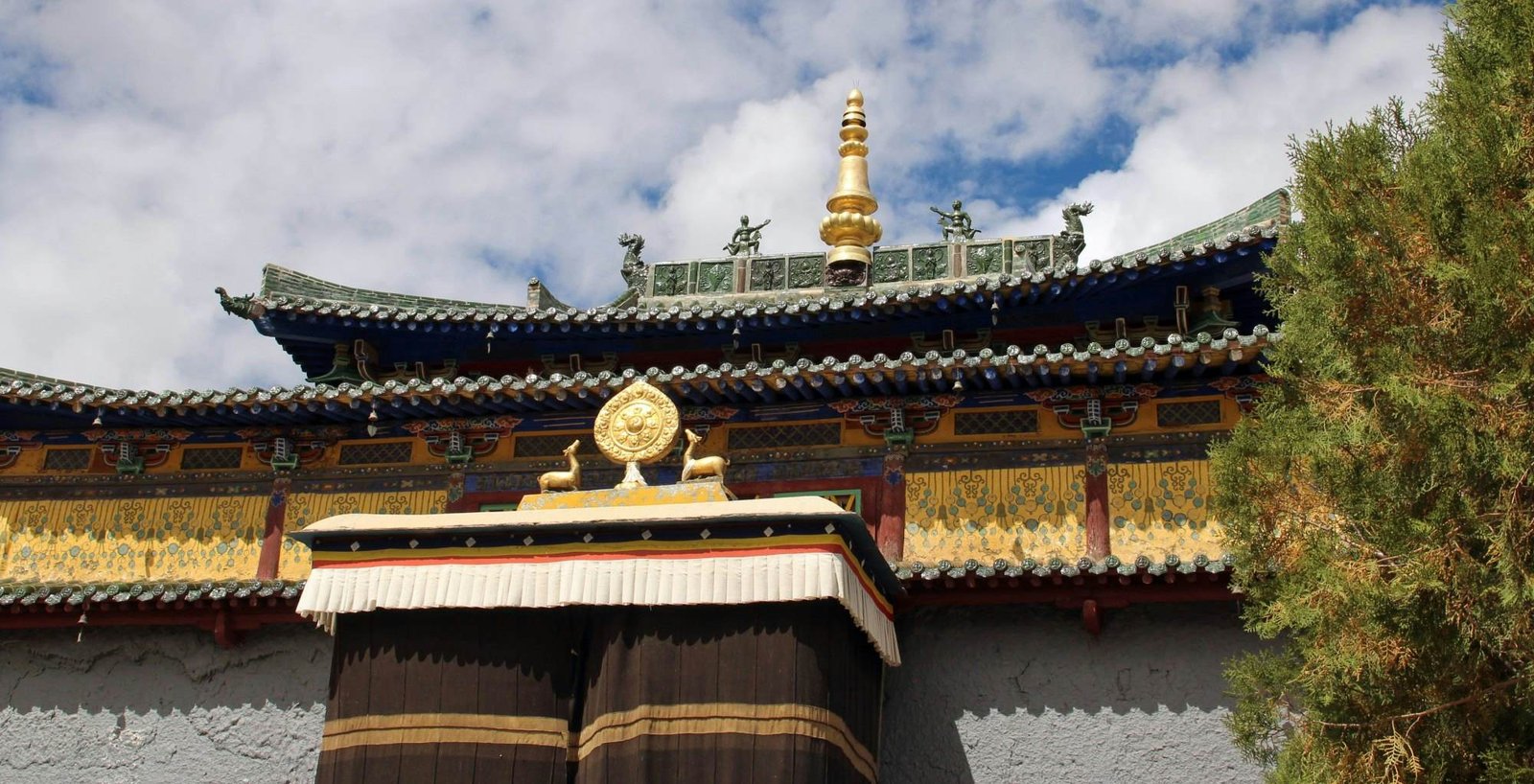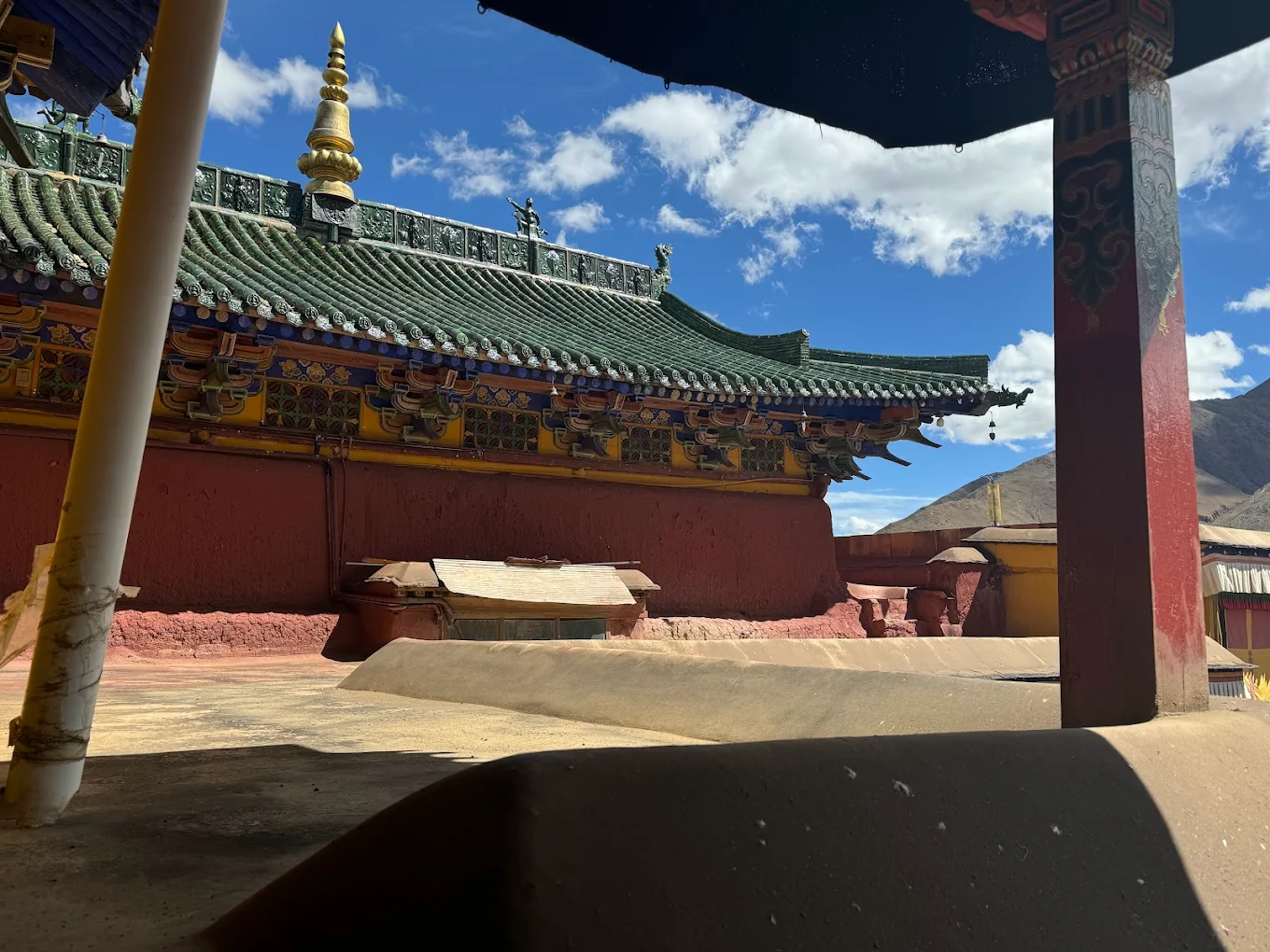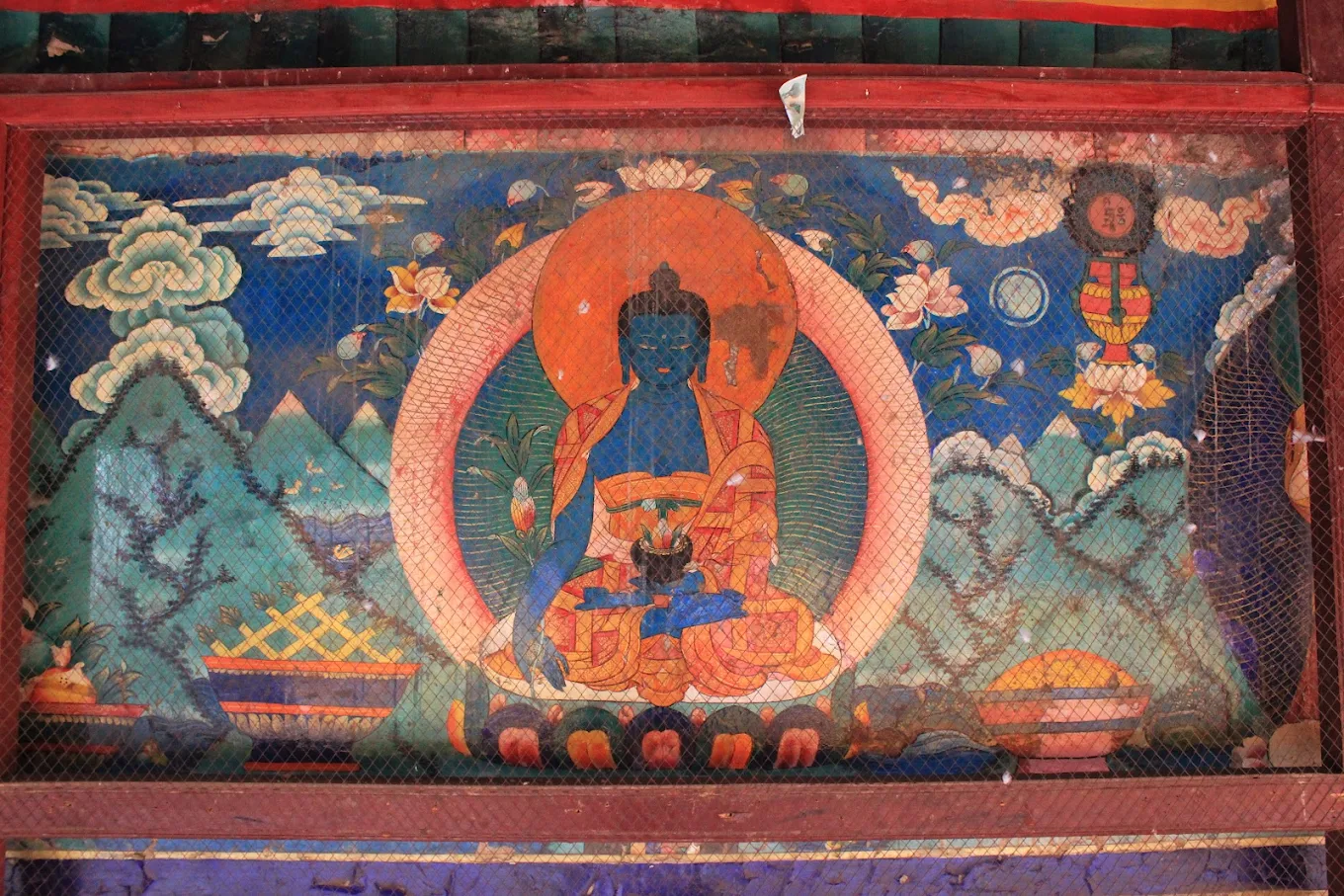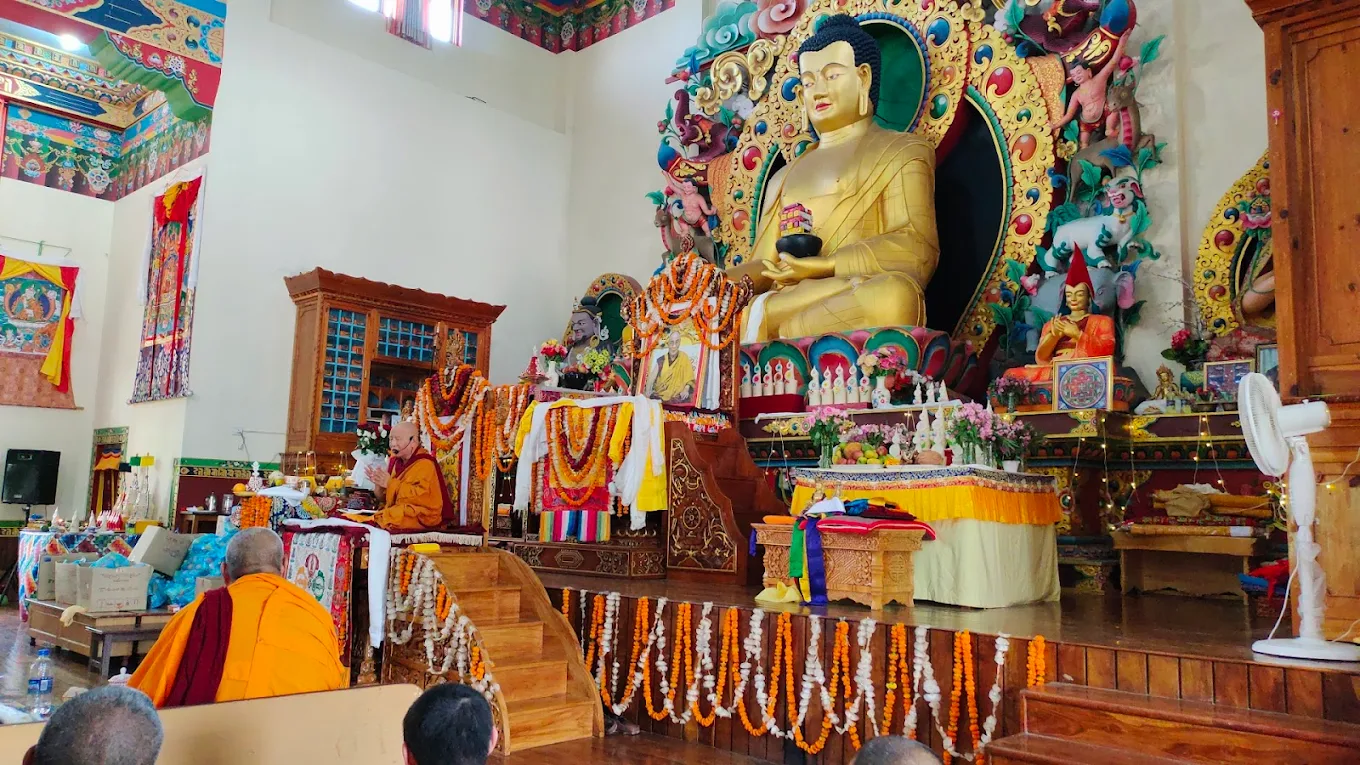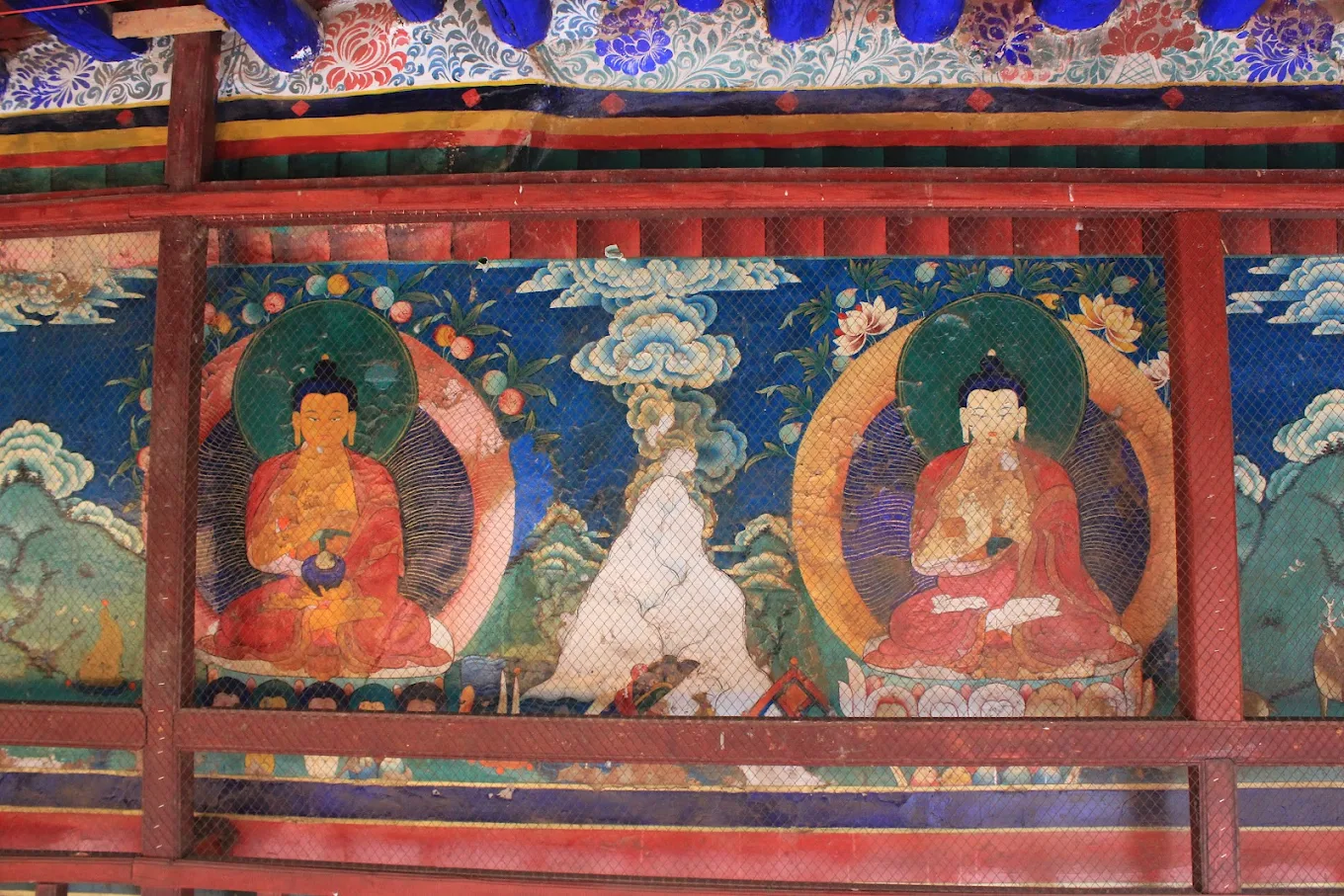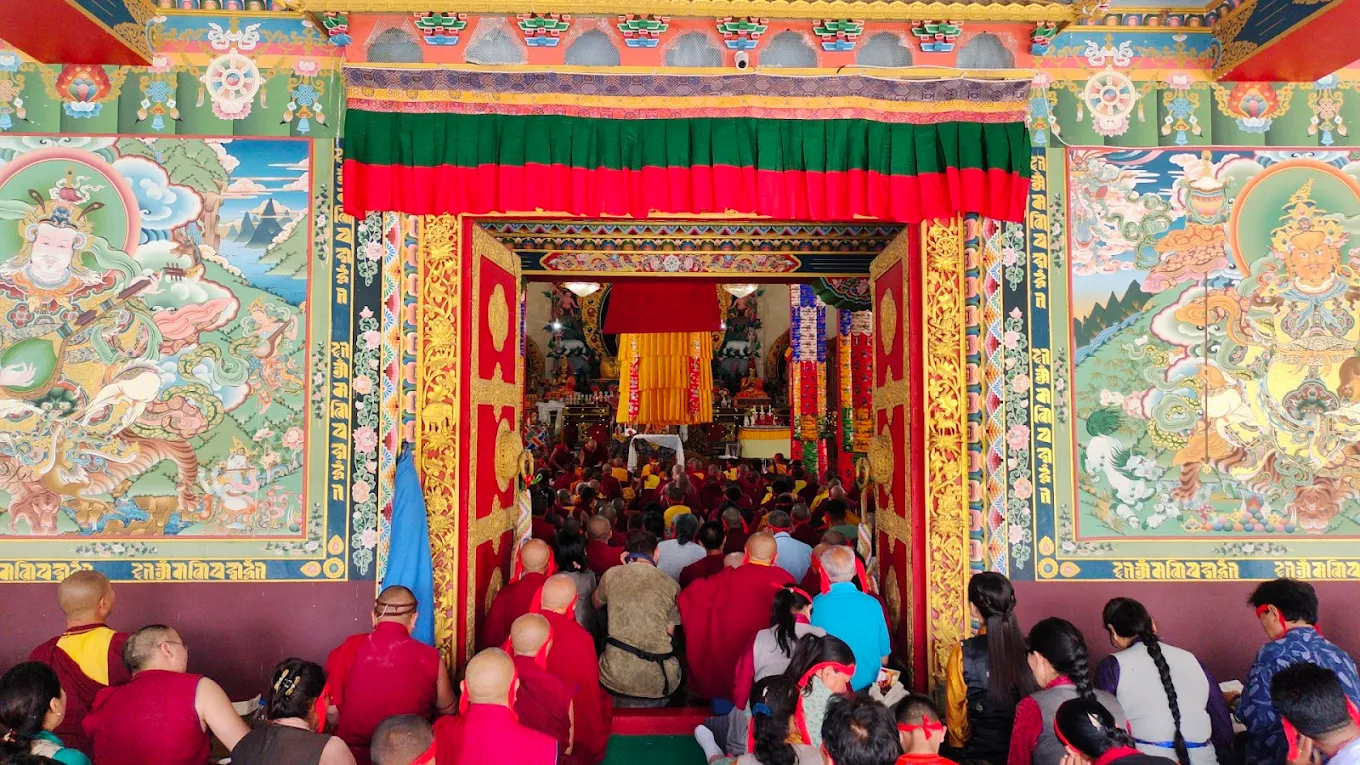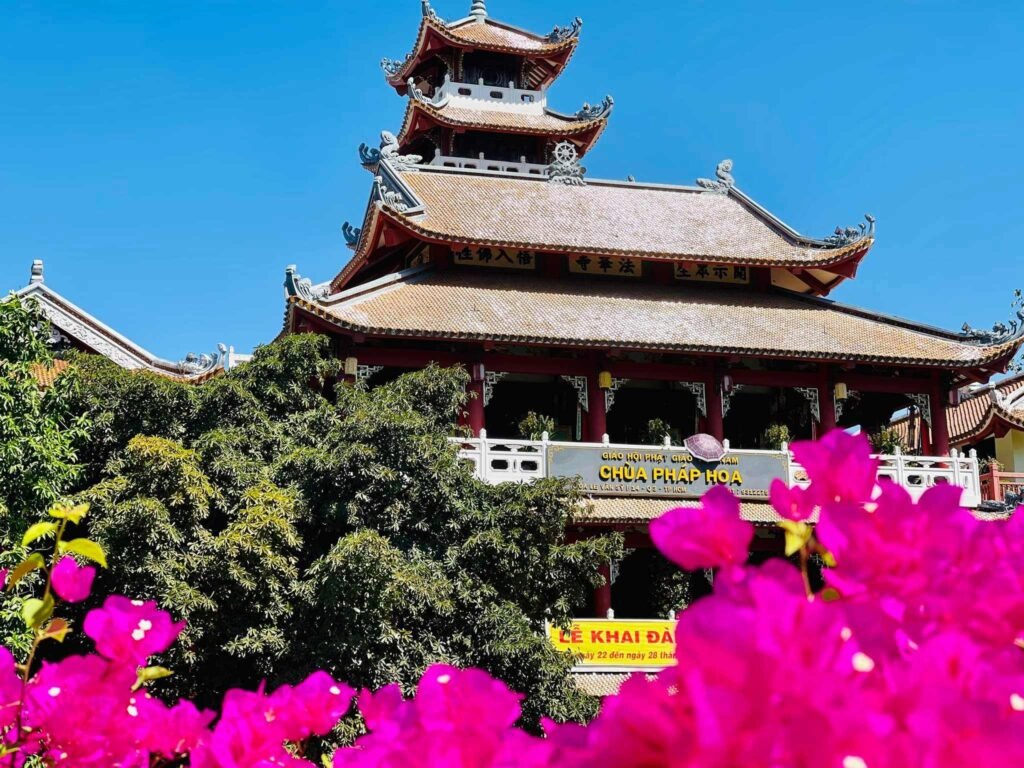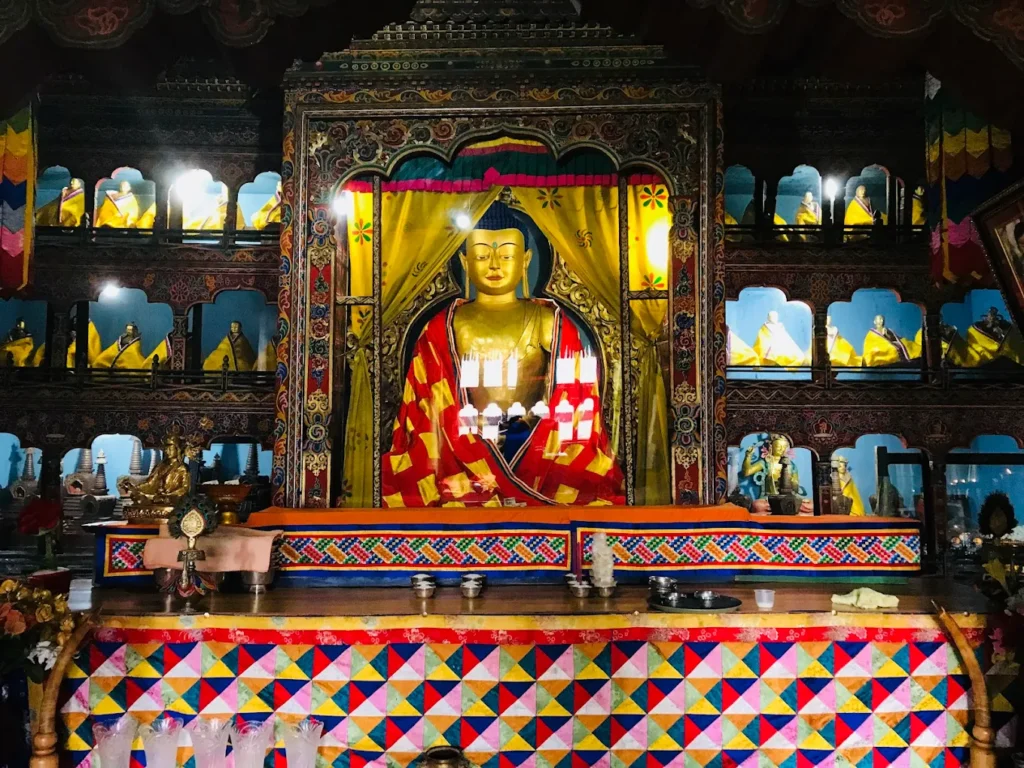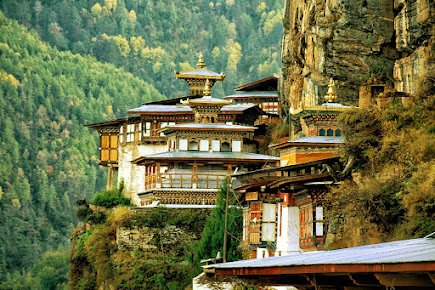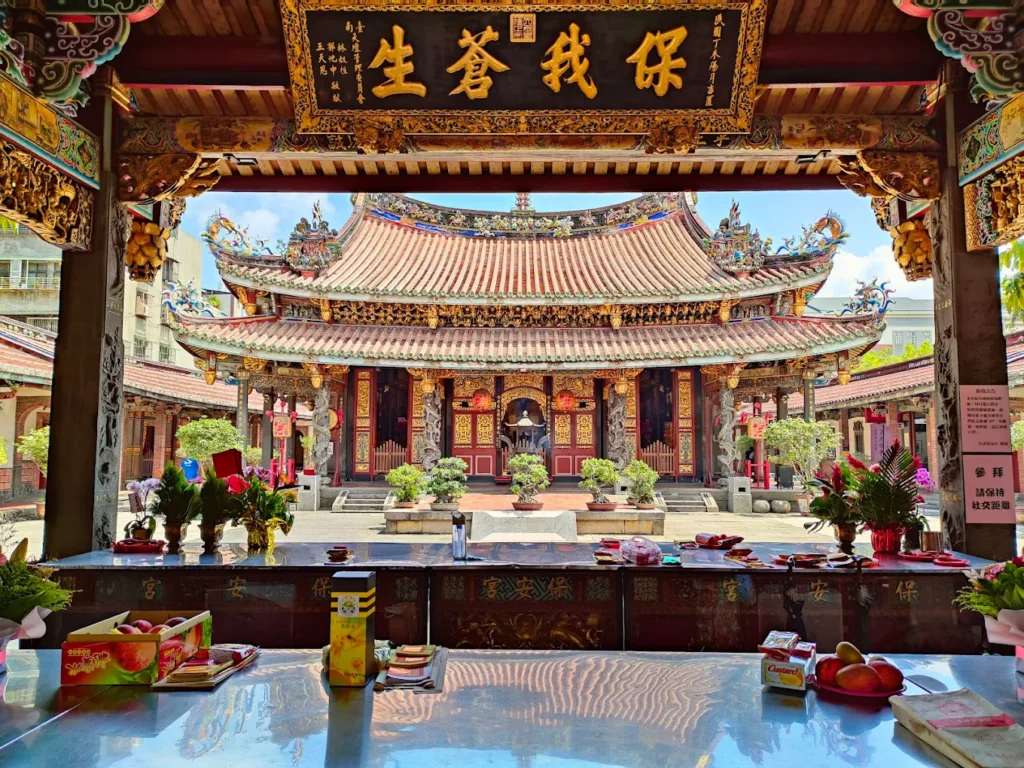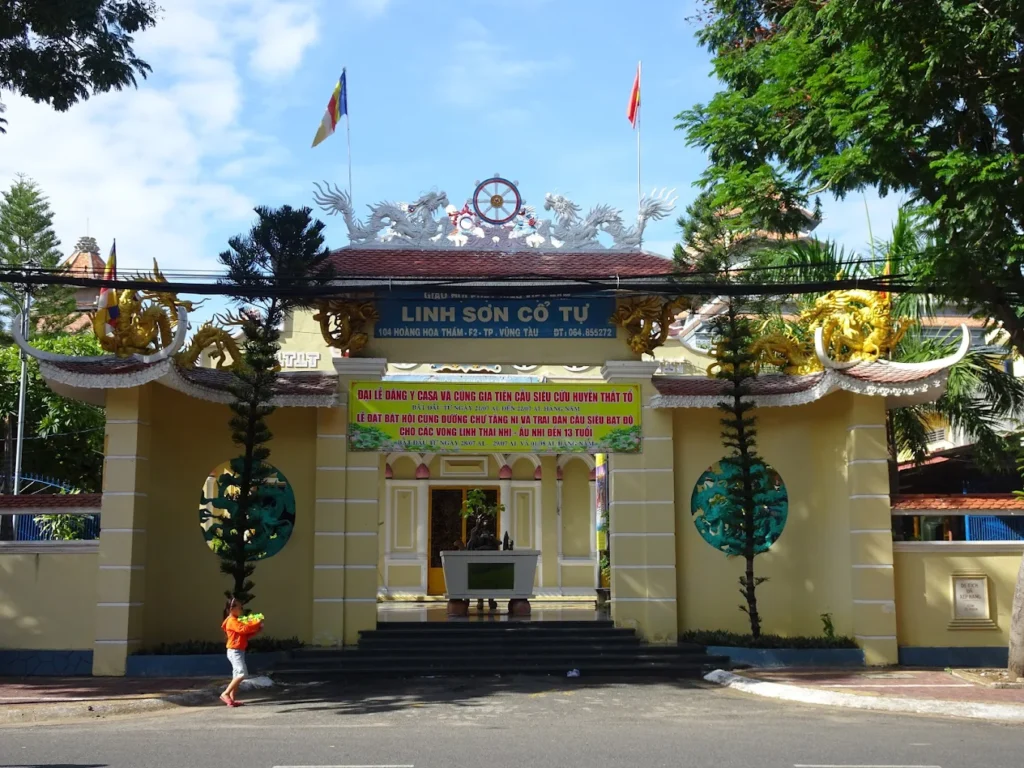Shalu Monastery: The Eternal Murals of Tibet’s Artistic Sanctuary
Shalu Monastery, cradled in a tranquil valley 20 kilometers southeast of Shigatse, Tibet, glows as a masterpiece of cultural fusion, its 14th-century murals weaving a vivid tapestry of Buddhist artistry. Founded in 1040 by Chetsun Sherab Jungnay, this sacred haven, named after a “new bud” pierced by an arrow, became a scholarly beacon under the Sakya sect’s Buton suborder. Its green-tiled roofs, a nod to Han Chinese influence, and intricate frescoes blending Tibetan, Chinese, and Newari styles create a visual symphony that captivates travelers and researchers. This immersive listing unveils Shalu’s essence, guiding you through its storied past, architectural splendor, sacred rituals, and practical visitor insights, offering a journey into a hidden gem of Tibetan heritage.
The Artistic Soul of Shalu
Essence of Shalu Monastery
Shalu Monastery radiates a serene majesty, its walls adorned with some of Tibet’s most ancient and exquisite murals. Established in 1040, it embodies the Sakya sect’s intellectual rigor, particularly through the Buton suborder, founded by the scholar Buton Rinchen Drub. The monastery’s defining trait—its 14th-century frescoes, fusing Tibetan, Chinese, and Newari styles—sets it apart as a living gallery of Buddhist art. Nestled in a lush valley, Shalu’s tranquil ambiance invites contemplation, drawing those seeking spiritual and cultural enlightenment.
- Spiritual Core: A Sakya sect stronghold, home to the Buton suborder.
- Iconic Feature: 14th-century murals, a fusion of cultural artistry.
- Cultural Role: A center for Buddhist scholarship and artistic preservation.
Historical Evolution
Shalu’s story began when Chetsun Sherab Jungnay, guided by his teacher Dorje Wangchuk, founded the monastery after an arrow struck a new bud, naming it “Shalu” (green crops). A devastating earthquake in 1329 destroyed the original structure, but under Mongol patronage and Buton Rinchen Drub’s leadership, it was rebuilt in 1333, incorporating Han Chinese architectural elements. Buton, the 11th abbot, cataloged 4,569 Buddhist texts, cementing Shalu’s scholarly legacy. Despite damage during the Cultural Revolution, restoration since the 1980s, supported by the Tibetan government and UNESCO, has preserved its murals and core structures.
- Founding: Established in 1040, named after a new bud.
- Reconstruction: Rebuilt in 1333 post-earthquake, with Mongol support.
- Preservation: Restored since 1981, murals protected as storeroom walls.
Cultural Impact
Shalu’s influence lies in its role as a crucible for Buddhist scholarship and art. Buton’s cataloging of the Kangyur and Tengyur scriptures shaped Tibetan Buddhist studies, while his History of Buddhism in India and Tibet remains a foundational text. The monastery’s murals, blending Chinese, Mongol, and Newari styles, reflect Tibet’s cultural crossroads during the Yuan Dynasty. Locally, Shalu nurtures artisans and monks, while globally, it attracts art historians and Buddhist scholars studying its frescoes and texts.
- Scholarship: Buton’s texts influence Tibetan Buddhist studies.
- Artistic Legacy: Murals showcase Yuan Dynasty cultural fusion.
- Global Appeal: Draws scholars and art enthusiasts worldwide.
Signature Legacy
Shalu’s 14th-century murals, painted under Buton’s oversight, are its crowning jewel. These frescoes, lining the inner kora of the Serkhang Temple, depict Buddhist narratives with vibrant pigments and intricate details. A legendary tale recounts how a naturally appeared statue of Chenresig (Avalokiteshvara), the monastery’s holiest relic, emerged from stone, inspiring devotion. This statue, housed in the West chapel, anchors Shalu’s spiritual identity, complementing its artistic splendor.
- Murals: 14th-century frescoes, a cultural treasure.
- Chenresig Statue: Naturally appeared, Shalu’s holiest relic.
- Artistic Narrative: Murals tell Buddhist and Tibetan tales.
Community and Global Reach
Shalu remains a spiritual home for local Tibetans, who offer prayers and seek blessings at the Chenresig statue. The Tibetan diaspora visits to reconnect with their heritage, while monks, now numbering around 80, uphold Buton’s teachings. Internationally, Shalu’s murals and texts draw art historians, with institutions like HimalayanArt.org documenting its treasures. The monastery’s exile branch in India, founded in 2005, extends its Bhulug lineage, supported by the Dalai Lama.
- Local Devotion: Tibetans pray at Chenresig statue.
- Diaspora Ties: A pilgrimage site for Tibetans abroad.
- Global Reach: Attracts art and Buddhist scholars.
Architectural Splendor of Shalu
Distinctive Design
Shalu’s architecture is a striking blend of Tibetan and Han Chinese styles, its green-tiled roofs gleaming against the valley’s earthy tones. Spanning 1,500 square meters, the monastery centers on the Serkhang Temple, surrounded by monks’ quarters and courtyards. The Tibetan-style whitewashed walls contrast with Chinese dougong (wooden brackets) and glazed tiles, a legacy of Yuan Dynasty reconstruction. This fusion, rare in Tibet, reflects the cultural exchange of the 14th century.
- Style: Merges Tibetan walls with Chinese roofs.
- Layout: Serkhang Temple at the core, with courtyards.
- Setting: Nestled in a lush valley, green tiles stand out.
Signature Structures
The Serkhang Temple, a three-story hall, houses the main assembly area (Tsokhang), enshrining Sakyamuni and his disciples. The inner kora, a circumambulatory path, is lined with 14th-century murals, a highlight for visitors. The West chapel, Lhakhang Lhoma, contains the Chenresig statue and a sacred vessel of Virupa, opened every 12 years. The South chapel, Segoma Lhakhang, once housed Shalu’s library, with ancient Kangyur scriptures still displayed. The upper floors, with Chinese-style siheyuan courtyards, feature mandala murals.
- Serkhang Temple: Main hall with Sakyamuni statue.
- Inner Kora: Mural-lined path for pilgrims.
- West Chapel: Chenresig statue and Virupa’s vessel.
Artisanal Mastery
Shalu’s murals, crafted by Tibetan, Chinese, and Newari artisans, showcase unparalleled skill. Painted with mineral pigments, they depict Buddhist deities and narratives, their colors vivid despite centuries of exposure. The Chenresig statue, believed to have formed naturally, is a sculptural marvel, its serene expression captivating devotees. Wooden dougong brackets, supporting the green-tiled roof, reflect Chinese carpentry, while thangka paintings in the chapels add vibrant detail.
- Murals: Mineral-pigmented, multi-cultural frescoes.
- Chenresig Statue: Naturally formed, a spiritual icon.
- Carpentry: Chinese dougong brackets, intricate thangkas.
Hidden Architectural Gems
Beyond the main halls, Shalu hides subtle treasures. The rooftop terraces offer sweeping views of the valley, with prayer flags fluttering in the breeze. Courtyard pillars, carved with lotus motifs, hint at Newari influence, while faded inscriptions on walls narrate Buton’s teachings. The library corner, though reduced, holds wooden scripture cases etched with mantras, inviting quiet reflection.
- Rooftops: Panoramic valley views with prayer flags.
- Pillars: Lotus carvings, Newari-inspired.
- Library Cases: Mantra-etched wooden scripture holders.
Preservation and Evolution
Preserving Shalu’s murals and structures is a delicate task due to Tibet’s harsh climate and past damage. Restoration since 1981, guided by UNESCO and Tibetan artisans, uses traditional pigments to repair frescoes, while green tiles are replaced with care. Modern reinforcements strengthen walls, blending with original designs. These efforts, funded by global donations, ensure Shalu’s artistic legacy endures.
- Restoration: Traditional pigments for murals, tile replacement.
- Modern Touches: Reinforced walls for durability.
- Funding: Supported by UNESCO and devotees.
Sacred Rites and Living Traditions
Sacred Daily Rites
Each dawn, Shalu awakens with soft chants, as monks gather in the Serkhang Temple to recite sutras, their voices mingling with juniper incense. Pilgrims offer khatas (silk scarves) at the Chenresig statue, their prayers echoing through the mural-lined kora. Butter lamps flicker, casting a warm glow on frescoes, creating a meditative ambiance. These rites, rooted in Sakya tradition, envelop visitors in Shalu’s spiritual rhythm.
- Chanting: Morning sutras in Serkhang Temple.
- Offerings: Khatas and butter lamps at Chenresig statue.
- Ambiance: Incense and flickering lamps.
Unique Spiritual Practices
Shalu’s monks perform distinctive rituals, such as crafting tormas (butter sculptures) for offerings, symbolizing impermanence. Every 12 years, the sacred vessel of Virupa is opened in a rare ceremony, drawing devotees for blessings. Pilgrims walk the inner kora, tracing murals with reverence, a practice believed to accrue merit. These rituals, tied to Buton’s teachings, deepen Shalu’s spiritual allure.
- Tormas: Butter sculptures for offerings.
- Virupa Ceremony: Rare vessel-opening every 12 years.
- Kora: Mural-lined circumambulation for merit.
Vibrant Festival Traditions
Shalu’s festivals, though smaller than in its heyday, remain vibrant. Losar (Tibetan New Year) sees monks perform Cham dances, their masked movements narrating spiritual tales. The Sakya Monlam prayer festival draws pilgrims for mass sutra recitations, with butter lamps illuminating the courtyards. Local families join monks, sharing tsampa (roasted barley) and tea, fostering a communal spirit.
- Losar: Cham dances and celebrations.
- Sakya Monlam: Mass prayers and lamp offerings.
- Community Role: Families and monks unite.
Visitor Engagement
Visitors can offer khatas or butter lamps at the Chenresig statue, guided by monks, immersing in Shalu’s spiritual life. Photography is permitted in the kora and courtyards, capturing murals’ vivid details, but flash is discouraged. Joining the kora allows travelers to walk with pilgrims, feeling the monastery’s sacred pulse. Monks may share stories of Buton, enriching the experience.
- Offerings: Khatas and lamps, guided by monks.
- Photography: Allowed, no flash near murals.
- Kora Participation: Walk with pilgrims for connection.
Monastic and Community Roles
Shalu’s 80 monks maintain daily rites, study Buton’s texts, and guide visitors. They engage with locals by offering blessings for harvests or life events, strengthening community ties. The monastery trains young monks in thangka painting, preserving artistic traditions. This symbiotic bond ensures Shalu remains a living spiritual center.
- Monastic Duties: Rites, study, and guidance.
- Community Ties: Blessings for local events.
- Art Preservation: Training in thangka painting.
Visiting Shalu Monastery
Navigating to Shalu Monastery
Shalu lies 20 kilometers southeast of Shigatse, along the Shigatse-Gyantse road, in a fertile valley. From Lhasa, a 280-km drive via the G318 highway takes 5 hours by bus or private tour vehicle, reaching Shigatse first. From Shigatse’s city center, a 30-minute car or taxi ride covers the 20 km to Shalu, passing barley fields. The monastery’s green-tiled roofs, visible from the road, mark the destination.
- From Lhasa: 5-hour drive to Shigatse on G318.
- From Shigatse: 30-minute car ride, 20 km southeast.
- Landmarks: Barley fields, green-tiled roofs.
Address of Shalu Monastery
- Location: Shalu Village, Samzhubzê District, Shigatse, Tibet Autonomous Region, China.
- Coordinates: 29.1333° N, 88.9833° E.
- Context: Rural valley, near Shigatse-Gyantse road.
Visiting Hours and Etiquette
Shalu is open daily from 9:00 AM to 5:00 PM, with early mornings offering quieter visits. Dress modestly, covering shoulders and knees, and remove hats in prayer halls. Photography is allowed in most areas but prohibited in the West chapel; avoid flash near murals. Respect pilgrims by maintaining silence and not touching frescoes or relics.
- Hours: 9:00 AM–5:00 PM, best in morning.
- Dress Code: Modest clothing, no hats in halls.
- Etiquette: No flash, silence near relics.
Accessibility and Safety
Shalu’s main areas are accessible via paved paths, but some halls involve steps, challenging for those with mobility issues. Wheelchair users may need assistance; contact tour operators for arrangements. Shigatse’s 3,800-meter altitude requires acclimatization to avoid sickness; hydrate and rest frequently. The rural setting is safe, but carry cash for local guides and watch for stray dogs.
- Accessibility: Paved paths, some steps.
- Mobility Aids: Limited, arrange assistance.
- Safety: Acclimatize, beware of dogs.
Amenities and Surroundings
Shalu offers basic amenities, including restrooms and a small shop selling khatas and prayer beads. Nearby Shalu Village has teahouses serving momos (dumplings) and butter tea, immersing visitors in rural Tibetan life. The valley’s fields and streams provide serene spots for reflection. Shigatse’s markets, 20 km away, offer souvenirs and dining options.
- Amenities: Restrooms, small shop.
- Food: Teahouses in Shalu Village with momos.
- Surroundings: Fields, streams, Shigatse markets nearby.
Immersive Visitor Tips
Arrive at dawn to witness monks chanting, their voices echoing through the Serkhang Temple. Capture murals from the kora’s upper level for a vivid angle, avoiding flash to preserve colors. Walk the valley paths at dusk, when fields glow golden, enhancing Shalu’s tranquility. After exploring, sip butter tea in Shalu Village, chatting with locals for cultural insights.
- Dawn Visits: Hear chants in Serkhang Temple.
- Photography: Upper kora for mural shots.
- Evening Walks: Valley paths at dusk.
